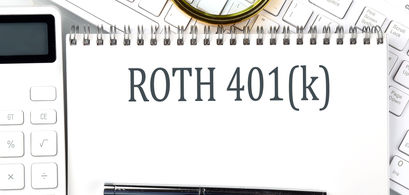The term rollover refers to the option of taking money from one retirement account and transferring it into another qualified plan. The most common rollover scenario occurs when an individual accepts a new job, and wishes to move a 401(k) plan to a new company, or another financial institution.
401(k) Plan Rules
It's very likely the new or former employer's 401(k) plan administrator can help facilitate this transfer. But accountholders need to be careful with a rollover, or they'll be subjected to tax penalties. This can happen because the Internal Revenue Service takes a cautious approach to any form of retirement plan withdrawal. In fact, they consider a 401(k) rollover a lump sum distribution until proven wrong.
Moving Cash or Assets
From the IRS's perspective, a 401(k) rollover occurs when cash or other assets such as stocks, bonds, and mutual fund shares are transferred from one qualified employer's plan to another 401(k) plan, a qualified retirement plan, or a Traditional IRA within 60 days. This is sometimes referred to as the 60-day rollover rule. Generally, if the taxpayer has not reached the age of 59 1/2, then contributions made to a 401(k) plan on a before-tax basis are eligible for rollover.
It's important to follow the correct process because the tax penalties are quite unattractive. In the next several sections, we outline a simple process to follow, as well as the "be careful" approach that sometimes occurs when attempting a rollover.
Direct 401(k) Rollovers
In a direct rollover scenario, the former 401(k) plan administrator will usually require the accountholder to fill out several forms describing the amounts withdrawn, and the account information for the new 401(k) plan, qualifying plan, or the IRA into which the retirement funds will be deposited.
Direct 401(k) rollovers are the most convenient way to move money from an existing plan into another retirement account. With a direct rollover, the money is transferred from one financial institution to another, and the owner never has to worry about withholding rules or tax penalties. Unless it's necessary to take possession of the funds in an account, a direct rollover is the safest and easiest way to make this transfer.
Payments to Individuals
If the accountholder has not reached age 59 1/2, and they choose to have the money in their 401(k) plan paid directly to them, then immediate tax penalties and withholding requirements may apply. When the money in a 401(k) plan is paid to an individual, there is a mandatory 20% withholding; even if the accountholder intends to deposit, or roll over, the money into a new retirement plan at a future date.
When performing this kind of rollover, it may be necessary to use funds from other sources to offset the 20% withheld. If these funds are not added, then the accountholder may be subject to an early withdrawal tax penalty. Let's look at a quick example to see how this works:
401(k) Rollover Tax Example
Let's say Joe saved $200,000 in his 401(k) plan, and he elects to receive the rollover payment directly. Joe will receive a check for $160,000 from that institution; not the full amount of $200,000. Under the 401(k) rollover rules, Joe will now have 60 days to deposit the full amount ($200,000) into another 401(k) plan, qualifying plan, or IRA to avoid tax penalties.
In this example, Joe had to supply the additional $40,000 withheld, and deposit this money into his new retirement plan in order to match 100% of the amount withdrawn.
Taxable Distributions
If the accountholder is under age 59 1/2 at the time of what is now deemed a 401(k) distribution, and they are not able to follow the above process, then tax penalties will apply. There are two "penalties" that occur if a rollover becomes a distribution:
Any funds not deposited / rolled over need to be treated as taxable income for that year.
The accountholder will be assessed a 10% early withdrawal penalty on the 401(k) funds not deposited.
401(k) Plans and Retirement
It's both fun and exciting to watch the money in a 401(k) account grow through the years. It's even more exciting to be offered a new job, a chance to work with new people, and stretch one's abilities as a professional at a new company.
But the IRS allows taxpayers to deposit money into 401(k) plans so they can save for their retirement years. If money is withdrawn from an account before reaching retirement age, as occurs with a rollover, the government wants to make sure this money goes right back into another qualifying retirement plan.
Take the time to understand all the 401(k) rules that may apply when making a change to an account, and talk to plan administrators if questions arise. A 401(k) rollover is extremely convenient since it allows the accountholder to manage their retirement funds in one place. Following the correct process makes the transition smoother too.
